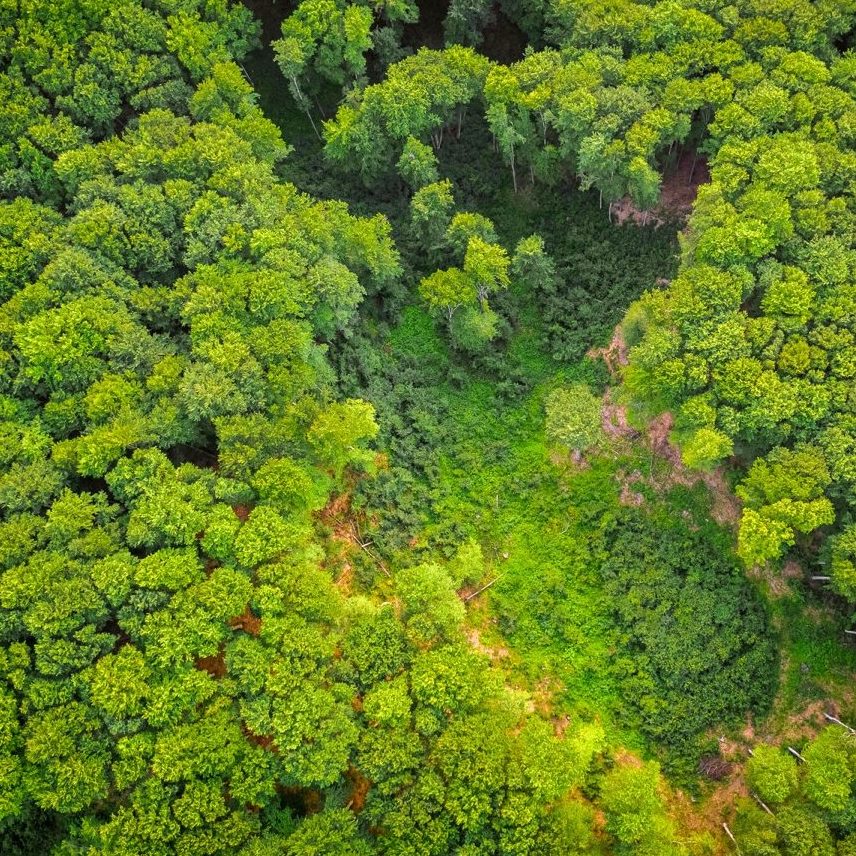Canadian-based company Flash Forest is using drones to plant thousands of trees in an effort to fight climate change.
The Earth has a problem. Every year, 33.1 billion metric tons of carbon dioxide are released into the atmosphere, and we’ve surpassed the planet’s natural ability to absorb it all. Carbon emissions are causing issues you’re probably familiar with, like health conditions and climate change (cue melting polar ice caps, devastating floods and hurricanes, and unbearable heat waves). We do have one abundant technology that can help fight climate change: trees. Trees naturally sequester carbon.
This is where Flash Forest comes in. The Canadian-based company is focused on planting a lot more trees with an edge of science fiction: Using drones, they fire seedpods into the ground to help restore habitats all over the country. Their plan is to plant tree species that are natural to each location and have high sequestration rates — they efficiently capture and contain carbon dioxide from the environment as part of their natural processes.
“On a personal level, I’ve wanted to do something about climate change for a long time,” says CEO Bryce Jones on the company’s website. “And after a lot of thought, I figured this is the most scalable way that we can actually have an impact on carbon emissions. There’s a huge shortage of tree planting labor supply, and there just really isn’t any technology here. Drones really offer the best next method of scaling up this process.”
Read more: What Are Carbon Offsets?
Trees are ideal sequestration factories because they already capture carbon dioxide from the environment and transform it into biomass through photosynthesis. The carbon eventually accumulates as deadwood and litter in forest soils. And Flash Forest is taking this natural, innate function of trees and marrying it with current technology.
First, their drones map the best planting locations, then they drop the seed pods. By relying on drone technology, they’re able to make a massive daily impact, with the ability to plant up to 100,000 seed pods a day. Their original plan was to plant 40,000 trees in 2020 and one billion trees by 2028. However, in the next year, Flash Forest’s reps say they plan to conduct several development planting trials, starting with research in Western Canada and expanding to international locations as well.
In 2018, the Intergovernmental Panel on Climate Change reported that planting one billion hectares of trees (which maps out to a forest that’s basically the size of the entire U.S.) could drastically limit global warming. In a world where climate change solutions can feel grandiose and hard to implement, planting a tree is astonishingly tactile. But despite that, research shows that we’re still losing 36 million trees annually, in both rural and urban communities.
Read more: Old-Growth Forests are Declining — Here’s Why That’s So Devastating
Flash Forest focuses on reforestation, aiming its attention on areas that have been destroyed by fires or clearing projects. Their pods are designed to retain moisture, so a tree can survive even if it’s dropped into an area where there’s a drought. There’s a benefit to planting native species, too — the trees should be able to survive with very little assistance. Meanwhile, the drones enable the company to drop seed pods in areas that would be difficult for people to navigate. They also allow Flash Forest to pull information months later to determine how many trees survived the planting phase.
Flash Forest’s funding comes mostly from organizations that are required to replant trees after destroying them, including forestry and mining companies. Some upcoming projects will also be funded by government contracts, and Flash Forest has received interest from companies who can get tax breaks for planting trees, too.
Of course, it’s important to keep in mind that planting trees won’t save us from climate change. Trees take generations until they’re mature enough to store meaningful amounts of carbon — and to avoid the disastrous impacts of climate change, we need to reduce our carbon emissions now. Still, reforestation will be an essential tool for sequestering carbon that’s already in the atmosphere, and trees are essential for maintaining a livable planet.

Read more: What is a Carbon Tax?
“No matter how small of a difference you think you are making, every bit helps.”
Climate change is not a phantom of the future, it is already here,” says Kaleigh Bruijns, Flash Forest’s brand coordinator. “In order to tip the scales back in favor of mother nature, we are all going to need to work together.”
Have feedback on our story? Share it with us by sending us an email at [email protected]

Shop Pillows
The Essential Organic Pillow Collection
Gentle, breathable, non-toxic support.





